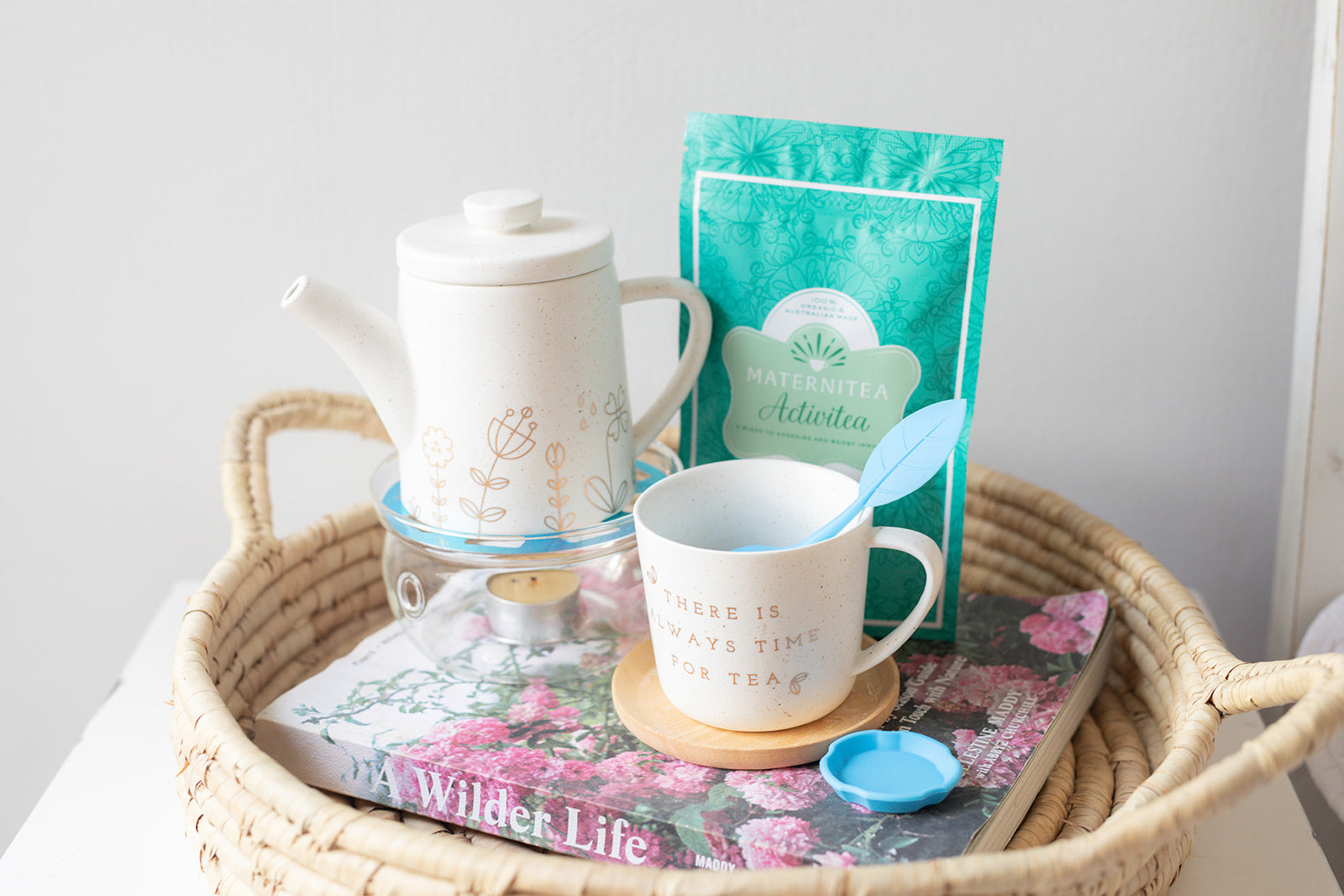Signs your breastmilk supply has dropped (and how to fix it)

If you’re a new Mama and worried about your milk supply you are definitely not alone. In fact, one of the biggest factors contributing to Mothers ceasing breastfeeding their bubs is the fear of not making enough of that precious liquid gold.
The truth is, the majority of women are able to produce enough breast milk to feed their baby, whilst a small percentage may struggle and have what is termed ‘true low milk supply’ which is usually caused by medical conditions such as insufficient glandular tissue (IGT), some metabolic conditions, retained placenta, postpartum haemorrhage, surgical inventions or from illness.
If you have been professionally diagnosed with these conditions, you may require medical intervention or in consultation with your caregiver such as a lactation consultant or midwife, consider mix feeding options. Most women who feel they are not producing enough milk, actually have a temporary low supply due to factors that, with support and intervention, can usually be managed.
How can I tell if I have temporary low milk supply?
Newborns are marvelous, intriguing and fascinating little beings. One thing they are not is robots. They come with their own set of often unpredictable behaviors which often cause many new mamas to mistake for low milk supply.
If your bub is fussy or cluster feeds for example, this is a completely normal behaviour and not an indication that you have low breastmilk supply. This is also true of softening of the breasts and/or your baby feeding more quickly. These both happen after your milk supply regulates to the needs of your new bub.
These are NOT indicators of low milk supply
- Baby wakes often through the night and doesn't feed for long periods
- Baby wants to breastfeed too frequently
- Baby cries a lot
- Baby drinks a bottle quickly as if they're hungry
- Baby sucks their hand frequently
- Baby doesn't seem settled at the breast
- You no longer feel a "let down"
- You cannot express much milk, or any
- Your breasts are soft and don't feel full
- Your breastmilk is watery or blueish in colour
Indicators of low milk supply
The best indicators of low milk supply or your baby getting enough milk are a decrease in their OUTPUT, in other words how much they poo and wee, and a prolonged period where they do not gain weight or stopped losing weight.
Its important to remember, most babies will actually lose weight in their first week(s) of life. They will then steadily gain weight each week within their own natural growth curve. A baby who struggles to maintain their weight and has a low output may indicate an issue with supply that should be addressed with your health care provider.
What can cause temporary low milk supply?
Latching
Your baby is not attaching well at the breast. This may also cause nipple pain and damage.
Schedules
Your baby does not feed often enough (this often occurs when a baby is put on a feeding routine or schedule as opposed to being fed on demand).
Feeding Duration
Your baby does not feed effectively and drain the breast. Often caused by prematurely ending the feeding session.
Mix Feeds
You have started using formula milk as well as breastfeeding.
Contraception
You are taking oral contraceptive pills containing oestrogen.
Drugs
You smoke cigarettes or take illicit drugs.
Blood Loss
You lost a significant amount of blood at birth or had complications during/after delivery.
Some Medications
Including over-the-counter and herbal preparations such as cold/flu tablets, may reduce your milk supply.
The great news is the temporary low supply caused by these factors can often be quickly rectified to help you return to a normal healthy breastmilk supply.
How can I increase my milk supply naturally?
If you are able to rule out medical reasons, smoking, drug use or medications and severe blood loss during birth, a qualified Lactation Consultant or breastfeeding consultant can help you with identifying what is happening and support you in rectifying the problem.
Breast milk production works on supply and demand; the more milk that is removed from your breasts, the more milk your body will make. If your baby is not regularly and effectively removing breastmilk, your body will think it doesn’t need to make more, so therefore wont. Once you have worked out why your supply may have dropped, you can start building it back up again. Below are my suggestions for increasing your milk supply naturally.
Breastfeed more frequently
Remember, supply and demand. The more milk you remove, the more your body will make for you. Feeding every 1.5-2 hours whilst trying to build up your supply can be very effective.
Both boobs
Your baby may have a preference for one side but you can always offer the other. This tells your body to increase milk production in both sides for the next feed.
Get your naked on
Skin to skin unrestricted access to your breasts whilst comfortable and relaxed is one of the very best ways to help your supply. Oxytocin will flow, both mum and bub will feel more relaxed and at ease. Why not get into bed, enjoy some milk boosting tea and a good movie for some all over self care.
Breastfeed in the bath
Similar to the reasons above, skin to skin contact and the added benefit of a warm soothing bath can do wonders for your breastfeeding journey and your supply.
Avoid bottles
Often, when mums give a bottle, rather than expressing at the time you’re feeding the bub a bottle, Mothers will often skip that feed altogether which signals to the body that milk doesn’t need to be made. Remember – Supply and demand. If you do need to give a bottle, try to make sure you pump around the same time.
Consider pumping
Adding pumping sessions between or after breastfeeding can be a very effective way of boosting your supply. The goal is to remove more milk from the breasts than perhaps what bub consumed, again, supply and demand, your body will think it needs to make more to keep up with demand.
Try galactagogues
Galactagogues are foods, herbs or medications that can help to increase breastmilk supply. There are many different types which are used in lactation teas, cookies, tablets that may help increase your supply.
Seek help
If you feel you are struggling with breastfeeding or managing your low supply, please always consult with a qualified Lactation Consultant or Breastfeeding Counsellor. Often a few minor adjustments can make a huge different to your breastfeeding journey.






